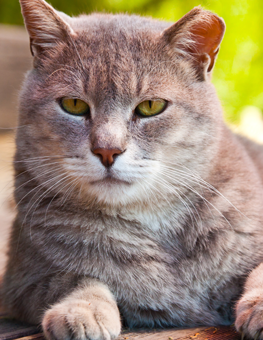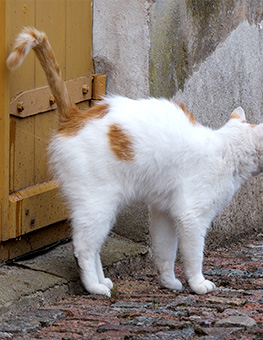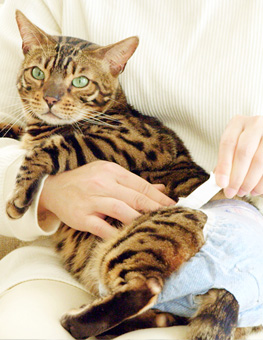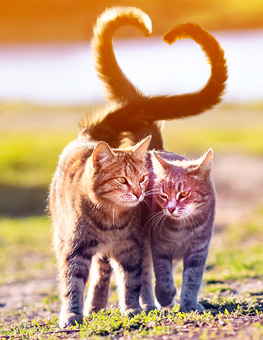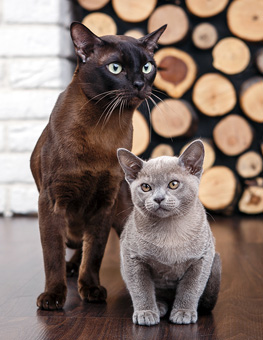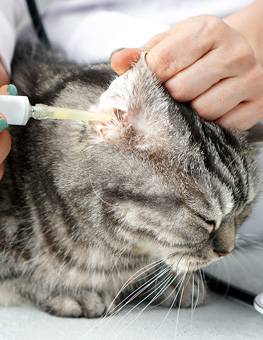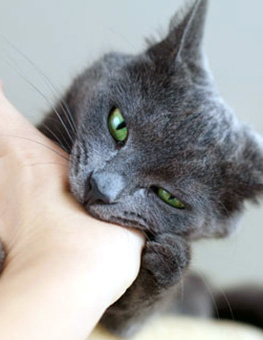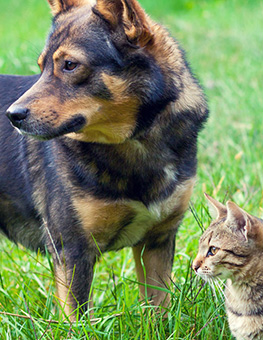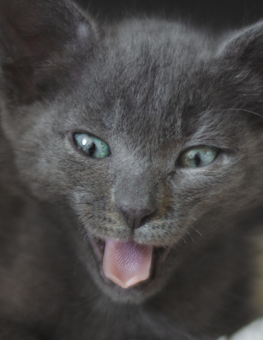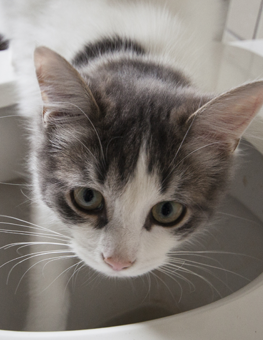How Do Cats Mark Their Territory?
Cats are very territorial creatures. Although they are “selectively social” with other members of the same species, in the end, our domestic house cats evolved from a solitary species.
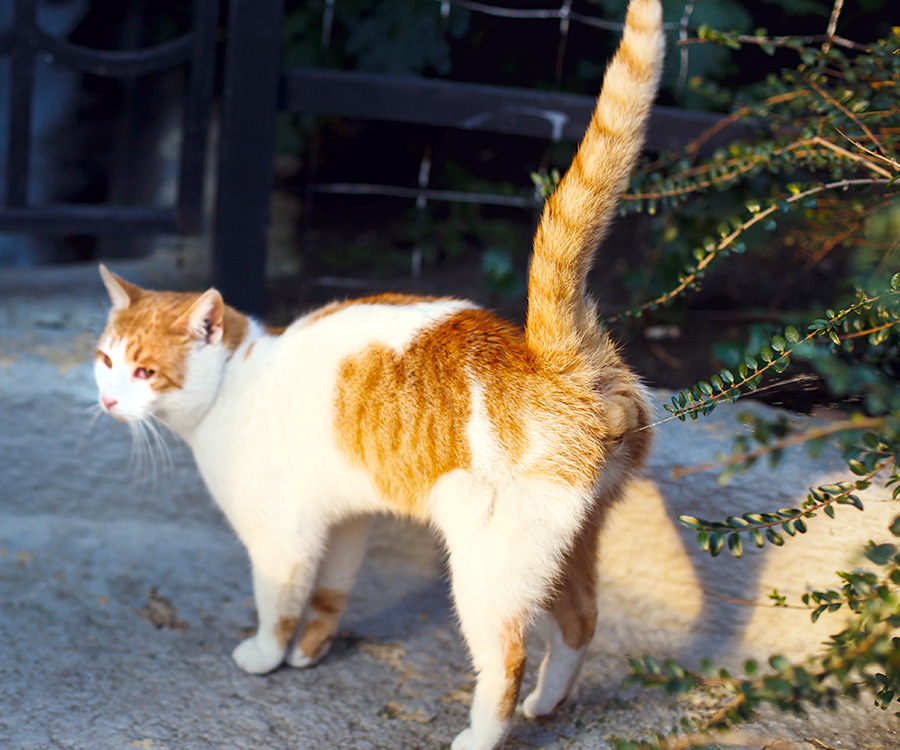

Cats mark their territory with urine and a few other ways.
Experts believe that cats developed marking behaviors to minimize contact with other cats, thus enhancing their odds of survival. Cats are both predators and prey. They prefer to escape threats and avoid conflict if at all possible, and marking lets other cats know that they live in the vicinity, so that a physical fight over territory can be prevented.
What Are the Ways that Cats Mark Their Territory?
Do cats mark their territory with urine? Yes, but there are a few other ways as well! We typically think of spraying urine as how cats mark their territory, but cats also communicate through scent glands on their cheeks, flanks, and paws. When you see your cat rubbing on furniture, the corner of the wall, or even your legs, that’s marking territory and claiming ownership of that space. When your cat is scratching his post, it’s not just sharpening his claws. He’s leaving his scent behind to let other cats know he’s been there. Favorite places cats scratch to mark are commonly used entrances and exits to the home; the main front door entrance; their favorite sleeping areas; and any boundary that they feel is being challenged in some way. Sometimes, cats will mark their territory with feces. This is called “middening.”
How Do Cats Mark Their Humans?
When your cat is rubbing on your legs, you might think of it as a sign of affection. It can be, but your cat is also marking you with his scent. People are usually marked by cats with their forehead, but this doesn’t necessarily mean that he thinks you belong to him. While furniture and other inanimate objects are marked by the sides of their cheeks and their chins.
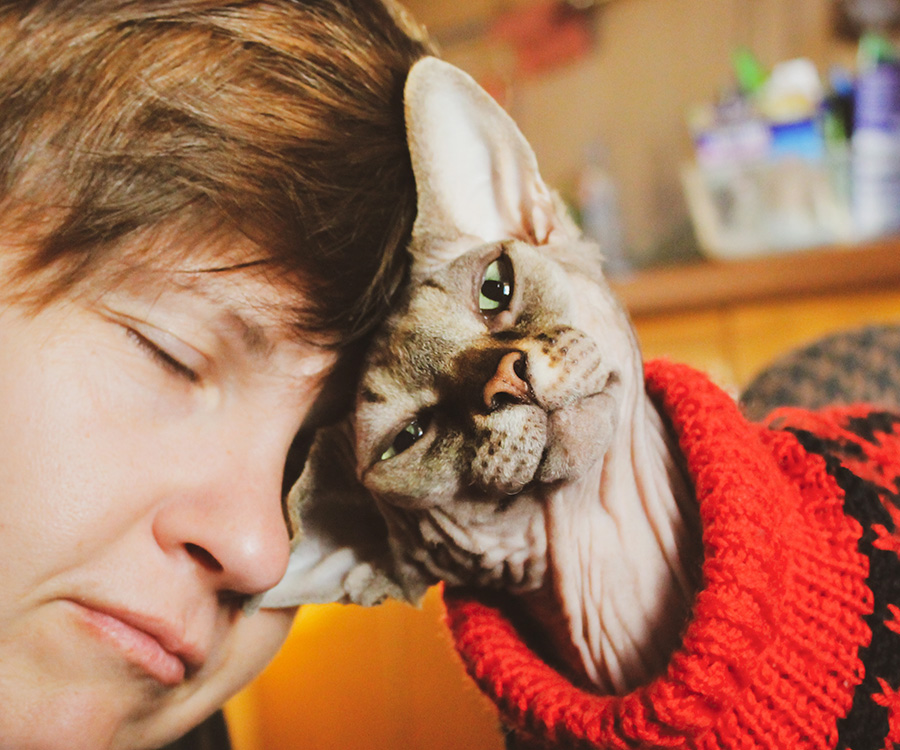

People are usually marked by cats with their forehead.
Friendly cats will often rub on and groom each other, mixing their scents. Scent is primarily how cats recognize each other, and physical contact through rubbing helps to create a “group scent,” reassuring all the cats in the home that you belong together.
Do Female Cats Mark Their Territory?
Yes, they do! It’s a common misconception that only male cats mark territory. Both male and female cats can mark with urine. Urine marking is most common in intact (non-neutered) male cats. When an intact male sprays urine, it has a strong, pungent, characteristic odor. Neutering will change the odor, and may eliminate entirely, or reduce the cat’s motivation for spraying; approximately 10 percent of neutered males and 5 percent of spayed females will, however, continue to spray after altering. Female cats also mark their territory through middening, rubbing, and scratching, just like male cats do.
How Can I Tell if My Cat is Marking Territory?
If you are finding feces or urine in locations outside of the litter box, the first step is always to consult with your veterinarian. This is often a sign of a medical problem. Urine marking is also not the same thing as house soiling, or having litter box issues. Cats who urine mark will typically also use the litter box to pee as well. Here’s how to tell the difference:
- Cats that urine mark will urinate mostly on vertical surfaces, though they sometimes mark horizontal surfaces, too. They deposit small amounts of urine, and display a typical posture while marking, which includes backing up to the object, lifting and often quivering the tail, and treading with the back feet.
- House soiling cats will usually urinate or defecate on horizontal surfaces only, with large amounts of urine deposited and with the definitive urinating posture of squatting to eliminate.
- If your cat is marking, they typically will not go through the motions of attempting to “cover” their elimination, because they will want everyone to know they’re here.
How Can I Minimize Urine Marking in My Home?
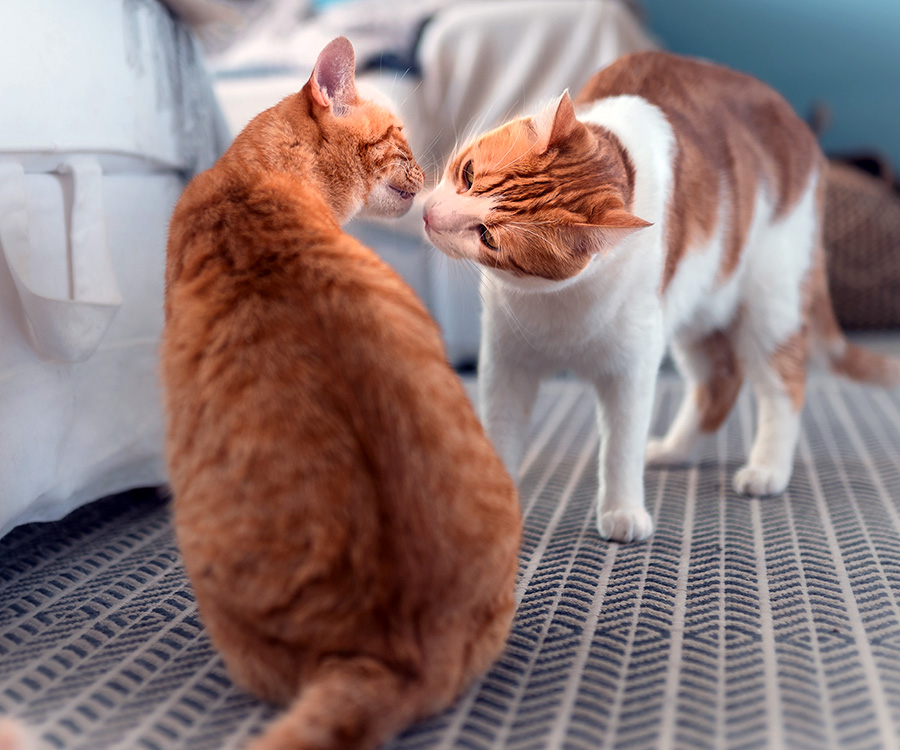

In a multi-cat home, anxiety can lead to spraying. Reintroducing cats slowly can help break down stress.
Minimizing marking behavior in your cat will mostly revolve around decreasing the motivation driving the behavior. Remember that marking is a territorial behavior, caused by the threat of other cats encroaching on their space. Typically, in a multi-cat home, the cat with the highest levels of stress and anxiety is the one spraying. Closing doors and windows to the outside will help keep the smell of neighborhood cats outside. Use of odor neutralizers also can prevent smelling the presence of other cats and help minimize the urge to mark territory.
If you have multiple cats, separating any that are having conflict is often necessary to reduce spraying behavior. You may have to slowly reintroduce them over a period of time. Providing common positive experiences with other cats can help break down some stress your cat is likely feeling from their presence. Work to develop positive play-times or common feeding times and locations, which will help your cat get comfortable around other cats.
Understanding why your cat is marking his territory and helping him to deal with those issues will help keep your house clean, keep your cat feeling secure, and keep you feeling happier with your cat.





